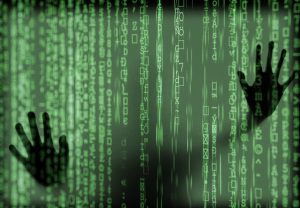A certain theory holds that people who succeed in cybersecurity, like the rich, are different from you and me. They see things from a different slant, finding patterns and connections in seemingly mundane or familiar environments that other people cannot see. Security guru Bruce Schneier describes it this way:
“Security requires a particular mindset. Security professionals – at least the good ones – see the world differently. They can’t walk into a store without noticing how they might shoplift. They can’t use a computer without wondering about the security vulnerabilities. They can’t vote without trying to figure out how to vote twice. They just can’t help it.”
Figuring out how to impart this “security mindset” to students matters a lot. Cybersecurity, as the news tells us nearly every day, is a huge challenge. From attacks on election integrity to enormous breaches of personal data stores to rampant phishing scams, the many different vectors of online risk touch every single person who uses the internet.
Compounding this challenge: the shortage of capable, trained candidates for the cybersecurity workforce. And by shortage, we should understand a yawning, cavernous, gaping abyss, fully 3 million-plus openings worldwide within the next two years. Even throwing all the 200,000 or so people who graduate every year with computer science and engineering degrees would hardly make a dent in this need.
We should understand, then, that getting kids aware of and excited about career opportunities in cybersecurity is an all-hands-on-deck effort. The out-of-school environment is especially important, because it offers so much room for exploration, collaboration, and hands-on experience in the field. And many organizations are stepping into this breach with afterschool-friendly resources, from bits’n’bytes to NOVA Labs to CyberPatriot, among many others.
The first step, though, can be the hardest to make: helping kids understand if they have an aptitude for cybersecurity work. How can we learn to identify – and help students self-identify as – budding cybersecurity whizzes? Of special importance is understanding that these special skills are not necessarily technical or computer-oriented. As Bruce Schneier observes, it has to do with seeing things differently, of imagining alternate uses – and misuses – of things more than it has to do with technical content or coding or networks and systems.
Of special importance is understanding that these special skills are not necessarily technical or computer-oriented. As Bruce Schneier observes, it has to do with seeing things differently, of imagining alternate uses – and misuses – of things more than it has to do with technical content or coding or networks and systems.
One approach to getting started with this work is to make it fun. Puzzles and brain teasers get everyone’s attention, and they can be great exercises for individual or group activities. Below is a selection of tricky but solvable brain teasers that draw on many of the same kinds of aptitudes underlying Bruce Schneier’s “security mindset.” Students who can solve them might well be taking their first steps towards study and work in cybersecurity and innovations in information security that we could all benefit from. Puzzles are calibrated to elementary, middle, and high school levels, though all of them can pose enjoyable challenges at any age.
Elementary school
1. What are the next two letters in the following series and why?
W A T N T L I T F S __ __
Answer: A and W – The whole string is made up of the first letters in each word of the question.
2. What letter is missing in the sequence?
M, A, M, J, J, __, S, O
Answer: A – Each is the first letter of a month of the year, starting with March, and A is for August.
3. What is the number missing from the last row?
37, 10, 82
29, 11, 47
96, 15, 87
42, __, 15
Answer: 6 – In each case, the middle number is the sum of the digits of the two numbers on the ends. 4 + 2 and 1 + 5 both equal 6.
Middle school
1. What is the logic that connects these words in this order? (Hint: read them out loud.)
gun, shoe, spree, door, hive, kicks, heaven, gate, line, den
Answer: They all rhyme, in sequence, with the numbers 1 through 10.
2. What is the next number in this sequence?
100 365 24 60 __
Answer: 60 – These are units of time in descending order: 100 years in a century, 365 days in a year, 24 hours in a day, 60 minutes in an hour, and 60 seconds in a minute.
3. What is the next number in this sequence?
77 49 36 18 __
Answer: 8 – Each succeeding number is the product of the two digits in the number before it: 7 x 7 = 49; 4 x 9 +36; 3 x 6 = 18; 1 x 8 = 8
High school
1. Explain how 10 plus 4 equals 2.
Answer: When you’re looking at a clock, 10 o’clock plus 4 hours = 2 o’clock.
2. What is the next number in this sequence?
1, 11, 21, 1211, 111221, 312211, _ _ _ _ _ _ _ _
Answer: 13112221 – Each succeeding number describes the number coming before it when you read them in order: 1 is one one, or 11; 11 is two ones, or 21; and so on.
3. Identify the next two numbers in the sequence below:
101,112, 131, 415, 161, 718, _ _ _, _ _ _
Answer: 192 021 – Looking at the numbers as two-digit, instead of three-digit, numbers will show them as 10, 11, 12, and so on.
Fall is a big time for cybersecurity public awareness. October is Cybersecurity Awareness Month, and the second week in November is National Cybersecurity Career Awareness Week, an initiative of the National Initiative in Cybersecurity Education. To find lots of informative, high-quality resources to help kids understand the opportunities and rewards in cybersecurity careers, check out the NCCAW website.
For breakfast, I had a bowl of cereal, the last two bites of my daughter’s bagel, and coffee, coffee, coffee.
Photo courtesy of Benjamin Earwicker.
Author: @ericiversen
